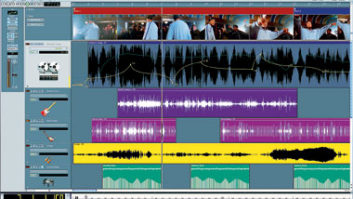
In 2021, streaming accounted for 83 percent of the recorded music market. You knew that. You also knew that the purchase of digital downloads continues to decline. And you also knew that vinyl is stubbornly holding on to its tiny market share.
What you may not know is that in 2021, CD sales increased by 50 percent over the previous year. This is the first time since 2004 that CDs sold more than they did the year before.
Why?
Sales of vinyl have increased over 350 percent since the start of the pandemic, and according to an article posted in August 2022 by NBC Los Angeles, “Current vinyl album sales are up 27.4 percent compared to this time last year.”
Why?
No, we won’t see CDs or vinyl regain their former glory, but that’s not the point. I think the resurgence of vinyl and CDs, no matter how small, might have real significance for our industry.
THE BEGINNING OF THE END
The race to the bottom began in 2001. Napster was shut down that year, but the genie was already out of the bottle. CD sales started their precipitous year-over-year decline. Apple released the iPod (the name was inspired by the line “open the pod bay doors, Hal” from 2001: A Space Odyssey) and launched iTunes, which paved the way for its iTunes store in 2003.
Consumers loved the iPod’s promise of “a thousand songs in your pocket.” They could even steal the music needed to fill up their hard drives, and then take the music wherever they wanted. Cool, right?
But there was a big problem. Those thousand songs had to fit on the iPod’s 5 GB drive. That meant 5 MB per song. That meant destructive data compression. And for Internet file-stealing, it meant 128 kbps data compression, or worse.
It also meant Apple had become the gatekeeper for the entire music industry—yet it had zero commitment to individual artists or labels. What mattered was keeping its store stocked, which sold music at a price it set, with a profit it specified, and with data-compressed quality that it determined. The entire record industry surrendered to Apple, in the face of an electronic revolution they were too clueless to anticipate. They didn’t really bother to counter Apple. They didn’t even have a counter.
The portal for music was no longer the home stereo, but a smartphone, MP3 player or computer. None proved ideal for listening to music. Computer speakers are not audiophile-quality. Listening on a smartphone means interruptions by notifications, batteries that run out, and using earbuds or Bluetooth.
Companies even stopped referring to people as listening to music. They used the term consuming music. Ultimately, the “victory” that the music industry achieved over Napster and file-stealing was putting music on a par with a Wendy’s chicken sandwich.
But not everyone wants to eat a Wendy’s chicken sandwich. Some prefer the experience of eating at a fine restaurant. For today’s audiophile who wants quality sound, by and large, the most convenient option remains the CD—and if you want an experience, your best option is vinyl. I think the uptick in CD sales, and the ongoing interest in vinyl, means that some people want gorgeous music in their living room—not just portable music that went through a data grinder.
Maybe people are starting to realize that streaming is great for consuming music, but it’s not always so great for listening to music.
THE PATH BACK TO QUALITY
And there’s a Trojan Horse: home theaters. People love their 4K and 8K video screens, so the next logical step is sound that’s on par with the video. Sound bars aren’t good enough. Wireless Bluetooth isn’t (currently) good enough.
Vinyl aficionados will remain, because for a music-listening experience, you can’t do much better than vinyl. The scent of vinyl, the gentle lowering of the tonearm, the beautiful cover art…it’s downright sensual compared to dialing in a streaming service on a smartphone. And the CD probably won’t disappear for at least a while longer. Companies still make audiophile-quality CD players, and let’s face it—properly mastered Red Book CDs sound damn good.
But the handwriting is on the wall for climbing back up from the bottom. Lossy data compression is becoming a relic. You can stream MQA (basically 24/96) and Dolby Atmos tracks on TIDAL for $20/month. Apple, Deezer Premium and Qobuz offer lossless audio. Then there’s Amazon Music Ultra HD, which delivers 24-bit/192 kHz quality. Spotify’s long-anticipated lossless tier may arrive soon.
The remaining barrier is that you need to listen over a system that can handle higher bit depths and sample rates. Smartphones don’t necessarily cut it, so an outboard DAC—while costly—is essential. I know people who’ve taken the plunge and invested in a quality DAC with equally high-quality speakers or headphones; for them, it’s a revelation. They’re blown away by hearing sound quality—not just sound quantity—maybe for the first time.
As Nora Barnes sang at the end of WWI, “How Are You Gonna Keep ’Em Down on the Farm (After They’ve Seen Paree?)” An entire generation has been raised on poor-quality sound, but they’re starting to see Paree. And they like what they see.
Maybe the race to the top has begun.






